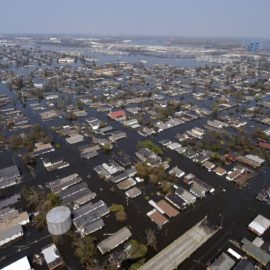
The cone of uncertainty may be more understandable and not so uncertain.
The nerve-wracking “cone of uncertainty” forecast as hurricanes approach should now be less uncertain. With hurricanes intensifying more rapidly, the National Hurricane Center says it is improving its forecasts with a new model capable of crunching a wide range of data and better predicting where storms could make landfall. The NHC announced last week that it began using its new Hurricane Analysis and Forecast System, known as HAFS, on June 27 to help predict tropical storm activity. It will be used alongside other models for this hurricane season before replacing them. An experimental version was also used as a supplement to other models from 2019-2022. “With the introduction of the HAFS forecast model into our suite of tropical forecasting tools, our forecasters are better equipped than ever to safeguard lives and property with enhanced accuracy and timely warnings,” said Ken Graham, director of NOAA’s National Weather Service. “HAFS is the result of strong collaborative efforts throughout the science community and marks significant progress in hurricane prediction.”
nola.com
Intensification is what they are looking for. The location is known.
NHC officials say this new model is better at predicting rapid intensification of storms, as seen last year when it was their first model to show Ian rapidly intensifying before making landfall in Florida. It’s also due to HAFS that tropical storm forecasts were extended to look seven days ahead instead of five this hurricane season. It works by using data from satellites, hurricane hunter flights and other meteorological instruments to recreate what a storm looks like up close. NHC meteorologists say this model is up to 15% more accurate than the last one, and expected to become more accurate over time. Officials say HAFS will show tropical cyclone track and intensity, storm size, storm surge, rainfall, and tornadoes associated with cyclones more accurately. The model will still use data from hurricane hunters to get information on storms. However, it will use this data to show storms in a higher resolution than before, allowing NHC meteorologists to see inside of storms more clearly and make more accurate wind intensity and rain forecasts.
Less errors and more accuracy.
The hurricane center’s hope is that, by 2027, there will be half as many errors in its forecasting than in 2017. That will continue progress made in recent decades as technology improves: In 2017, errors for 24-72 hour track forecasts were reduced by 75% since 1992. NOAA developed HAFS as a result of the Weather Research and Forecasting Innovation Act of 2017, which required the agency to research how to improve hurricane prediction and warnings, specifically for better rapid intensification and storm track prediction. NOAA started developing this new model in 2018 using hurricane and disaster supplemental funding, and continued development using funds from the 2022 Disaster Relief Supplemental Appropriations Act. Since 2007, the NHC was using the Hurricane Weather Research Forecast model, which is a lower resolution version of the HAFS. This hurricane season will be the last year for the old model. “HWRF will continue running in parallel to the HAFS model during this year’s hurricane season, giving NHC an additional year to compare the performance of HAFS to the legacy systems before sunsetting them by end of the season,” said Vijay Tallaprgada, a senior scientist with the NWS Environmental Modeling Center.
Better information helps better preparation.



